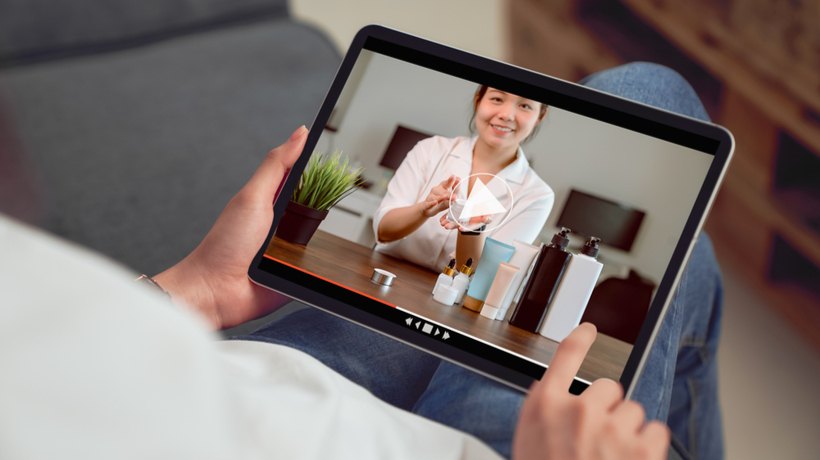Why You Need To Use Video In Product Training
Timothy is the product training manager of a large consumer electronics company. Recently, the company launched a new washing machine into the market, and he was assigned the responsibility of training the firm’s sales staff on the product. The budget allocated for the training was very low, and Timothy was asked to train his salespeople across Europe and the Americas in just one week.
Daniel is a Learning and Development executive working with a company that manufactures complex equipment used in oil rigs. A few weeks ago, the firm released a new piece of machinery, and Daniel was tasked with training their service technicians across the world on the machinery.
Nathan is the customer education manager of a global ICT company. Fifteen days ago, his company released a new laptop into the market, and Nathan was asked to create an online training program that explains the working of the new laptop to customers across the world.
Requirements such as the above are quite common in the corporate training landscape. Most companies understand the importance of imparting effective training to their staff on products and educating customers about their usage. However, they are constrained by the lack of time and financial resources.
Organizations need to develop product training programs rapidly, to “synchronize” them with product launches. They also need to ensure that the training programs are developed with minimal expenditure, as Learning and Development budgets shrink in real terms [1].
How can these problems be overcome? What does it take to impart high-quality, timely, cost-efficient product training to learners across the world? One of the options is to go for video-based learning.
How Do Videos Help Impart Good Product Training?
1. Video-Based Lessons Can Be Developed Fast, At Low Costs
We’ve seen that companies need to develop product training programs rapidly, with minimal expenditure. You can meet this requirement very effectively using video-based learning. Video-based product training programs can be developed faster and cheaper compared to other formats of product instruction. All you need to shoot a learning video on your products is a mobile device. It is as simple as that.
2. Ideal For Learners Who Travel Constantly
Most consumers of product training content such as salespeople and service technicians are constantly on the move, and as a result, have little time to attend classroom training sessions. This has made mobile learning the preferred choice of companies, as effective training can be provided on the move.
Bite-sized learning videos can be accessed very comfortably on the tablets and smartphones of learners. Microlearning videos are also useful to impart good just-in-time (JIT) product knowledge support to employees. More about JIT support in a moment.
3. Product Information Can Be Provided At The Point Of Need
Proper delivery of just-in-time (JIT) product information goes a long way in enhancing the performance levels of service technicians. Many companies are using mobile-compatible tools to provide the required information about their products at the point of need. Bite-sized video-based learning modules are very useful to deliver good product knowledge support to your staff. The short duration of these modules and ease of access on smartphones and tablets make them the best tools to provide JIT learning support. Consider the following scenario.
A service technician of an automobile company is examining the faulty engine of a land rover and identifies that there is a problem with the fuel injection system. He opens a native app on his smartphone and watches a video containing the steps of a procedure to repair the system. The technician follows the steps and fixes the issue.
4. Learner Engagement Levels Can Be Improved
You want to make your product training program highly engaging, don’t you? Videos are the perfect tools to make product training interesting. Video-based lessons appeal to auditory and ocular senses, and this goes a long way in increasing the attention levels of learners. According to research [2] conducted by Philip J Guo et al, short video-based learning programs are very effective in holding the attention of learners.
5. Product Knowledge Can Be Reinforced Effectively
One of the key challenges in imparting good product training (or training on any aspect, for that matter) is helping learners retain the information delivered. This challenge can be overcome by repeating the information in spaced intervals of time, using bite-sized modules. You can use micro video-based lessons to reinforce the learning imparted in a product training session very effectively.
One of our clients in the automobile space uses video-based learning nuggets to reinforce product knowledge. The client records classroom product training sessions, divides these recordings into bite-sized videos, and delivers them at spaced intervals – after 2 days, 14 days, and 60 days – to maximize the retention of learning. These microlearning videos can be accessed by learners, conveniently, on their mobile devices. This initiative proved highly successful and ensured that learning is not at the mercy of employees’ memory.
Good product training plays a key role in enhancing the bottom line of companies, and video-based lessons go a long way in imparting product training of high quality. Sales reps today have busy schedules, strict targets, and punishing deadlines. In this scenario, video is the optimal solution to offer product training that sticks.
Footnotes:
- 2016 Training Industry Report
- How Video Production Affects Student Engagement: An Empirical Study of MOOC Videos









